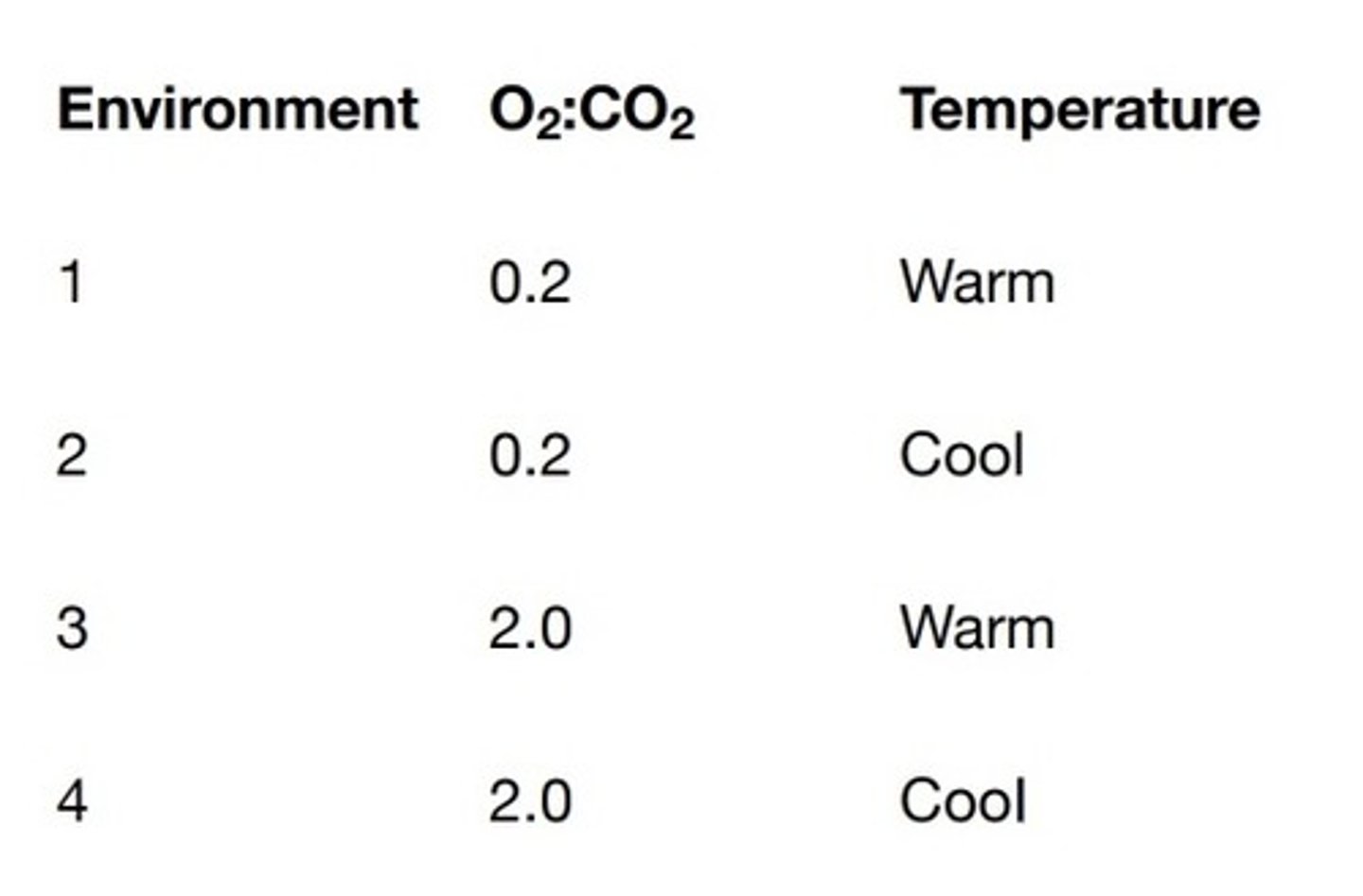Ecology (Chapters 1-5)
1/46
There's no tags or description
Looks like no tags are added yet.
Name | Mastery | Learn | Test | Matching | Spaced |
|---|
No study sessions yet.
47 Terms
Ecology is the the scientific study of how organisms affect- and are affected by- other organisms and their environment.
A. True
A team of researchers are conducting a study to determine the impact of prescribed burning in an evergreen forest on understory species diversity during the subsequent growing season. They establish 2 comparable research plots within a large evergreen forest- 1 plots will be burned and 1 plots will not. If you were critiquing this experimental design, the biggest flaw would be a lack of:
C. The lack of replication
A team of researchers is conducting a study to determine the impact of prescribed burning in an evergreen forest on understory species diversity during the subsequent growing season. They establish 8 comparable research plots within a large evergreen forest- 4 plots will be burned and 4 plots will not. To minimize the potential impacts of smoke during the burns on the neighboring town, the researchers decide to burn the 4 plots furthest from the town and use the 4 plots nearest the town as the unburned plots. If you were critiquing this experimental design, the biggest flaw would be a lack of:
B. The lack of randomization
Which statement about ecology is false?
A. Ecology is an interdisciplinary field that incorporates concepts from the natural sciences, social sciences, politics, and ethics
B. Ecology involves the scientific study of interactions that determine the distribution and abundance of organisms
C. Ecology involves the scientific study of interactions between organisms and their environment
D. all of the above
E. none of the above
Ecology is an interdisciplinary field that incorporates concepts from the natural sciences, social sciences, politics, and ethics
Which sequence represents the correct order of levels of biological organization, from largest to smallest
biosphere < ecosystem < community < population
An ecologist wants to study a large forest ecosystem which was last studied more than 50 years ago. She hopes to determine what changes have occurred in plant species composition since the previous study. She will begin by documenting the current characteristics of the plant communities. This study design is an example of a __________ .
A. field observation
An ecologist wants to study how a large forest ecosystem will change over the next 50 years. She will begin by documenting the current characteristics of the plant communities and then use climate change predictions to determine how these distributions might change. This study design is an example of a __________.
B. mathematical modeling
Losing one level of an ecosystem is relatively inconsequential to the overall ecosystem
B. False
Based on our current understanding of ecology which of these statements is incorrect
A. If we just remove humans everything will go back to how it was with no intervention
B. Different species often respond in different ways to changing conditions.
C. Natural systems do not necessarily return to their original state after a disturbance
D. Seemingly random perturbations can play an important role in system health
If we just remove humans everything will go back to how it was with no intervention
Refer to the graphs below based on studies of the effects of pesticides on the tadpole immune system. In a laboratory experiment, wood frog tadpoles were exposed to low or high concentrations of a pesticide, and then Ribeiroia parasites. The tadpoles were then examined for (A) numbers of eosinophils (white blood cells that combat infection as part of the immune systems) and (B) numbers of Ribeiroia cysts. Which statement is not supported by the evidence shown in the graphs?
A. Tadpoles exposed to low levels of pesticides had more, on average, cysts per tadpole than those exposed to high levels of pesticides.
B. Tadpoles exposed to pesticides had fewer eosinophils.
C. Similar results were seen in the solvent control and the low pesticide groups.
D. all of the above
E. none of the above
C. Similar results were seen in the solvent control and the low pesticide groups.
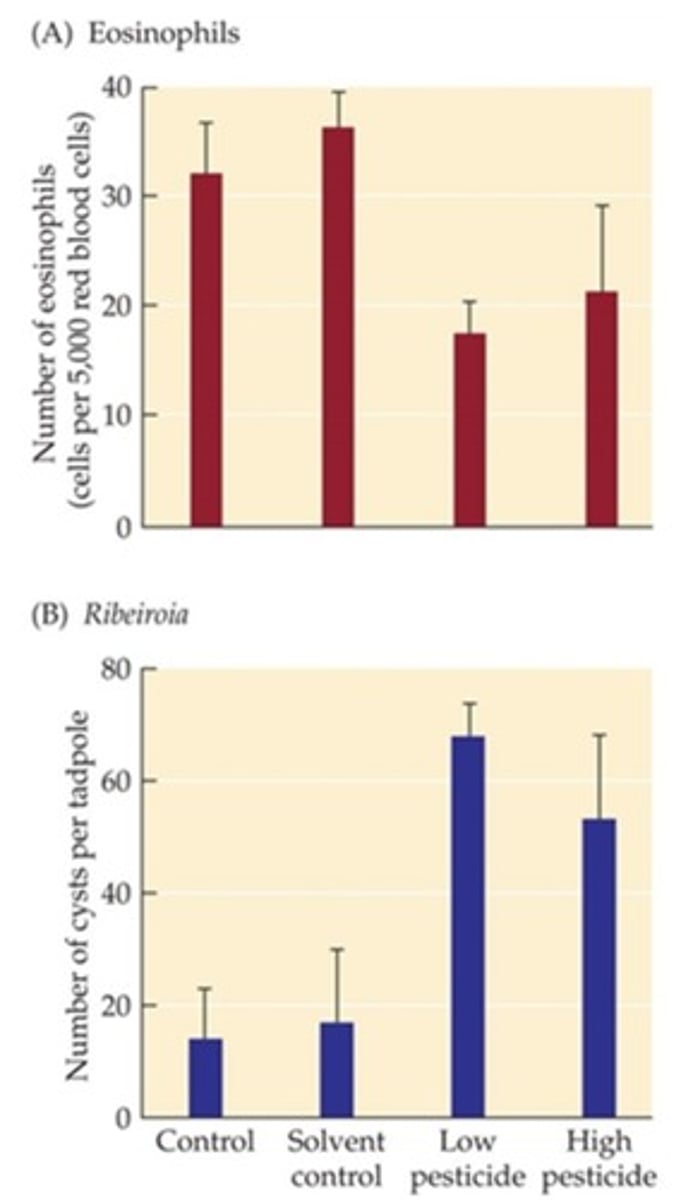
A niche is the abiotic conditions needed by species to survive, grow, & reproduce
B. False
Which statement about oceanic currents is true?
A. Only some are true
B. Oceanic currents can have profound effects on the climates of regions where they flow
C. Deep oceanic currents meet surface currents at zones of upwelling
D. Dense downwelling currents move to the equator
E. They are all true
F. Surface currents are more wind-driven, while deep currents are more density-driven
They are all true
Which of these is not a way that organisms interact with their environment?
A. Organisms interact with temperature in the environment
B. Don't pick this answer
C. All of the above are ways that organisms interact with the environment
D. Organisms gather energy from the environment
E. Organisms gather inorganic nutrients from the environment
C. All of the above are ways that organisms interact with the environment
_______is current environmental conditions observed
D. Weather
Of the incoming solar radiation, how much is absorbed by the surface of the Earth
49%
The greenhouse effect is only caused by human causes
B. False
Which statement about oceanic currents is false?
Because they move so slowly, oceanic currents contribute little to the exchange of heat between the tropics and the polar regions
Which of these phenomenon explains the increased amount of nutrients present in the Galapagos?
A. upwelling
Some models of climate change suggest that the Gulf Stream is becoming weaker. Such a weakening in the Gulf Stream would most likely result in:
A. cooling in Seattle.
B. No effect on London or Seattle.
C. warming in London.
D. cooling in London.
cooling in London.
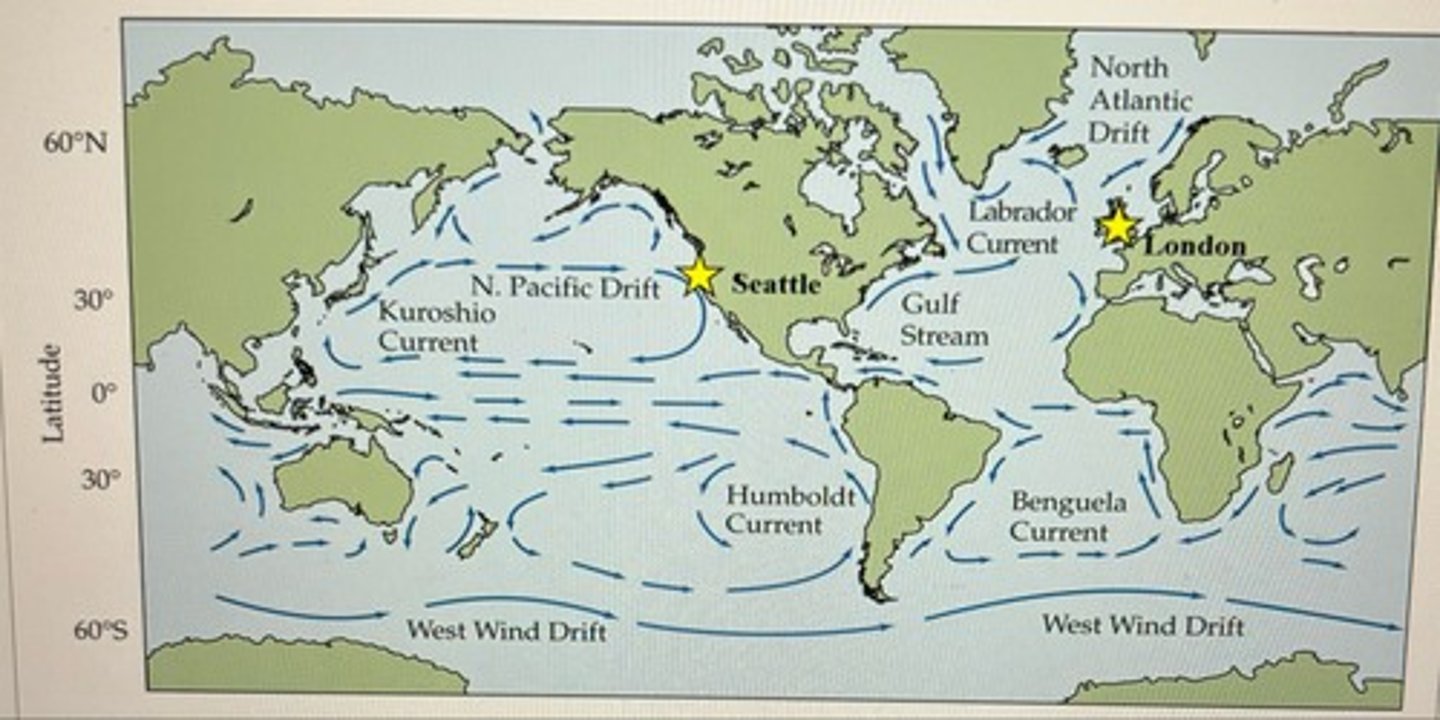
Compared with land at the same latitude, ocean waters tend to be______in the winter and _______ in the summer because water has a ________heat capacity than land has.
A. warmer; colder; higher
Warm air is _____ dense than cool air. As air cools, it
B. less; sinks
________ is a long-term description of environmental conditions, based on averages and variation measured
over decades.
D. Climate
Of the incoming solar radiation, how much is reflected back via clouds or aerosols
B. 33%
Refer to the figure below, which shows how biomes vary with temperature and precipitation. Suppose climate change caused the average annual precipitation in a temperate evergreen forest to decrease from 200 cm to 90 cm, while the temperature remained the same. What biome would you expect to replace the temperate evergreen forest?
C. temperate grassland
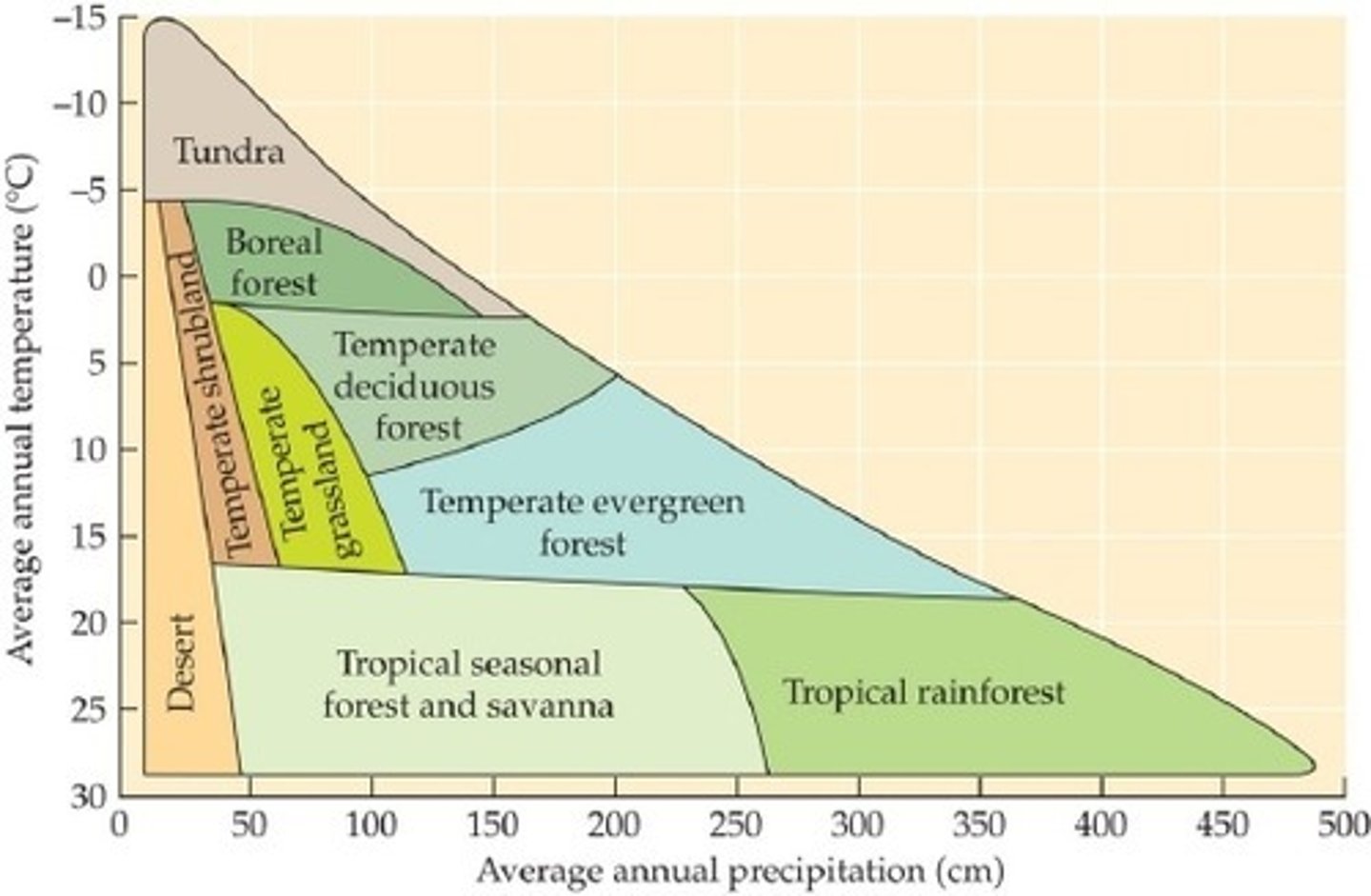
Which of the following is not a factor affecting an organism's potential distribution? (hint: remember the definition of potential distribution)
E. competition for prey
A biome extends across several continents. Parts of the biome on the different continents can be best identified by the___________.
D. dominate growth forms of its plants
This biome present in Florida contains acidic soils and lots of conifers
C. temperate evergreen forests
This group of vertebrates is particularly reliant on water
C. amphibians
The short-term adjustment to environmental conditions is termed
A. acclimatization
_______is heat energy is carried by moving water or air.
B. convection
Marine environments are normally ____________ relative to the organisms that live there.
B. isoosmostic
Refer to the graph below showing the relationship between the outside temperature and the internal temperature of three animals. Which of these animals is an endotherm?
A. Both B and C
B. only A
C. only B
D. only C
B. only A
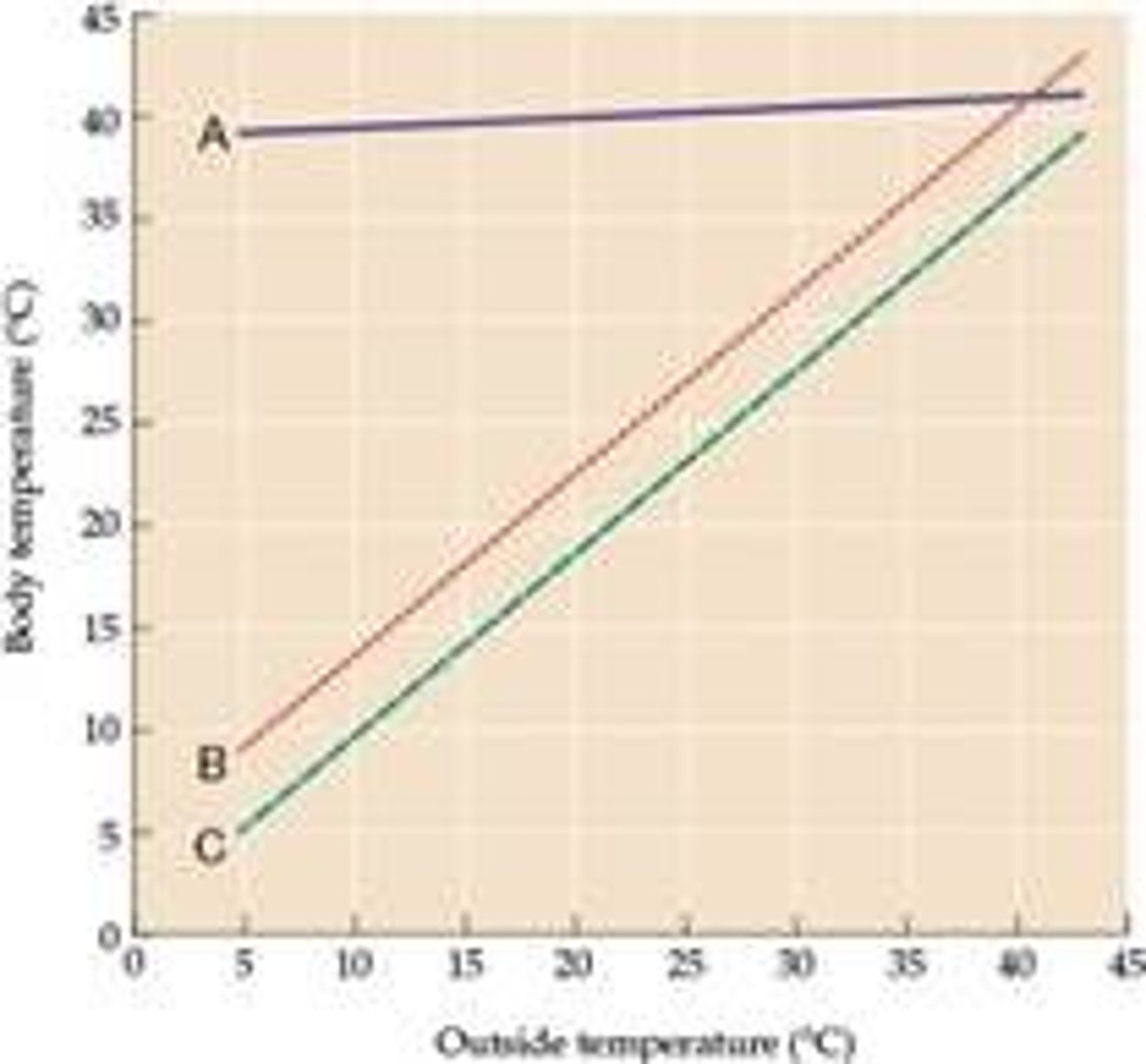
Refer to the graph below showing the relationship between the outside temperature and the internal temperature of three animals. Which of these animals is an ectotherm?
A. Both B and C
B. only A
C. only C
D. only B
A. Both B and C
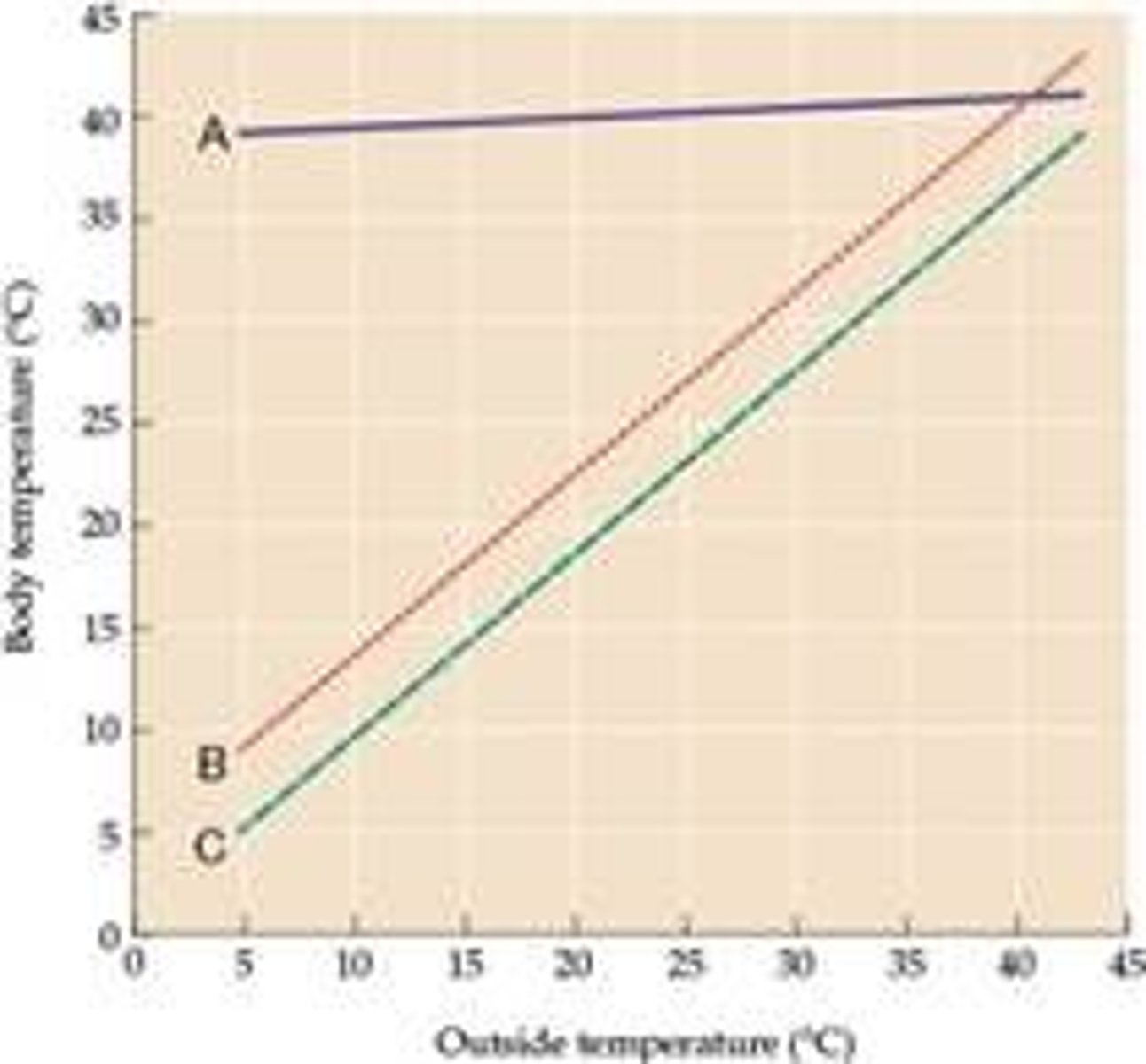
Marine environments are normally ____________ relative to the organisms from fresh water environments.
B. hyperosmotic
_______ is the transfer of energy from warmer to cooler molecules.
C. conduction
This biome is charecterized by being present in the tropics with nearly 2000nm (79in) of rain annually
B. Tropical Rainforests
Refer to the figure below showing how biomes vary with temperature and precipitation. If climate change caused the average annual precipitation in a Tropical seasonal forest to decrease from 200 cm to 40 cm, while temperature remained the same, what biome would you expect to replace the Tropical seasonal forest?
A. Desert
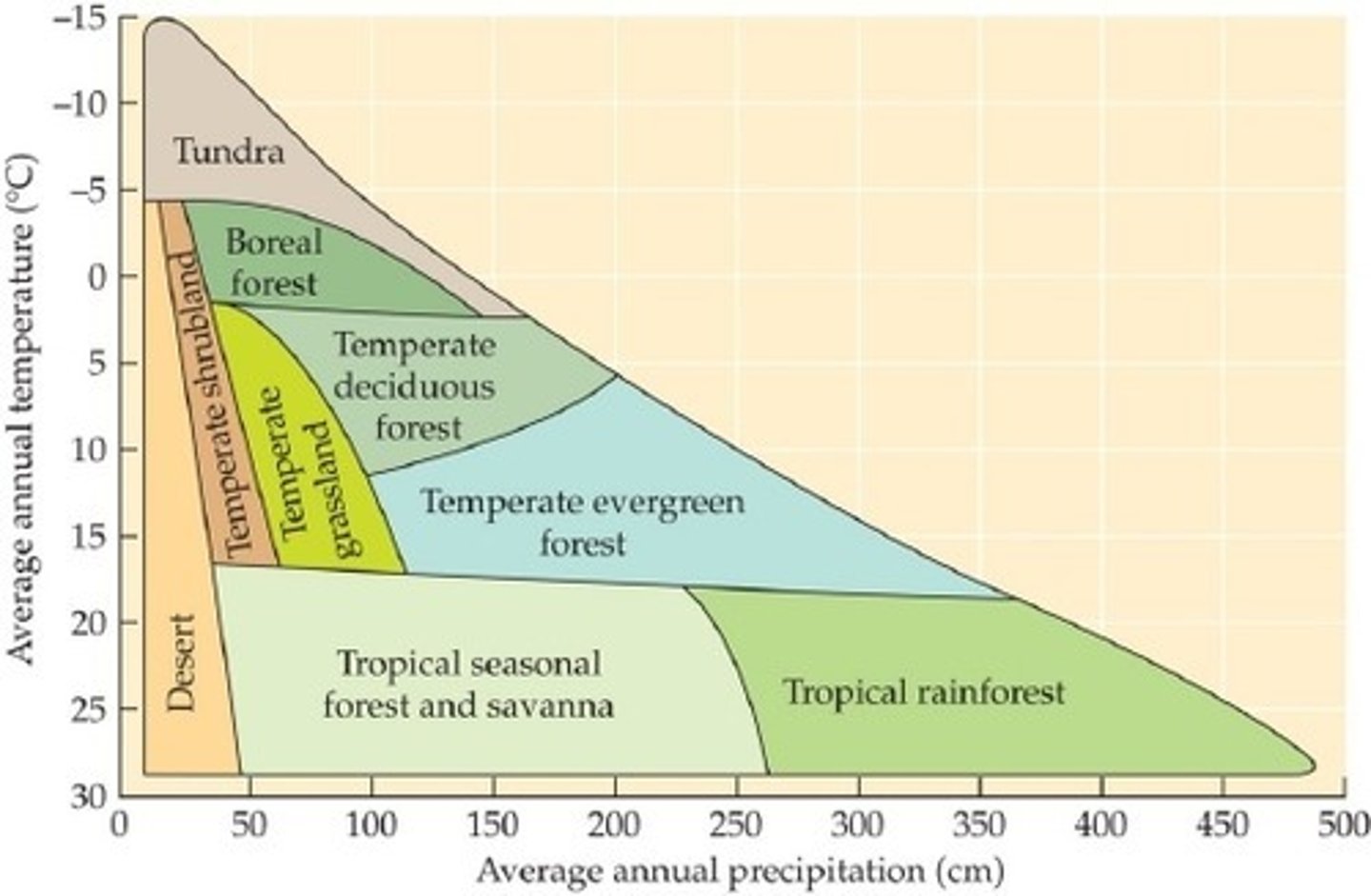
Which of these is not a basic energy requirement for organisms
A. all are energy requirements
Which of these is the primary source for energy on our planet
A. sun
This organism relies on consuming other organisms to procure energy
B. heterotroph
Which of these is not a type of photosynthesis
D. chemosynthesis
Carnivorous plants consume their prey as their primary means for obtaining energy
B. False
Refer to the figure showing the CO uptake in soybean leaves in response to increasing O concentration for soybean leaves exposed to two different CO levels.
B. CO2 uptake decreases with increasing O2 concentration at both CO2 levels.
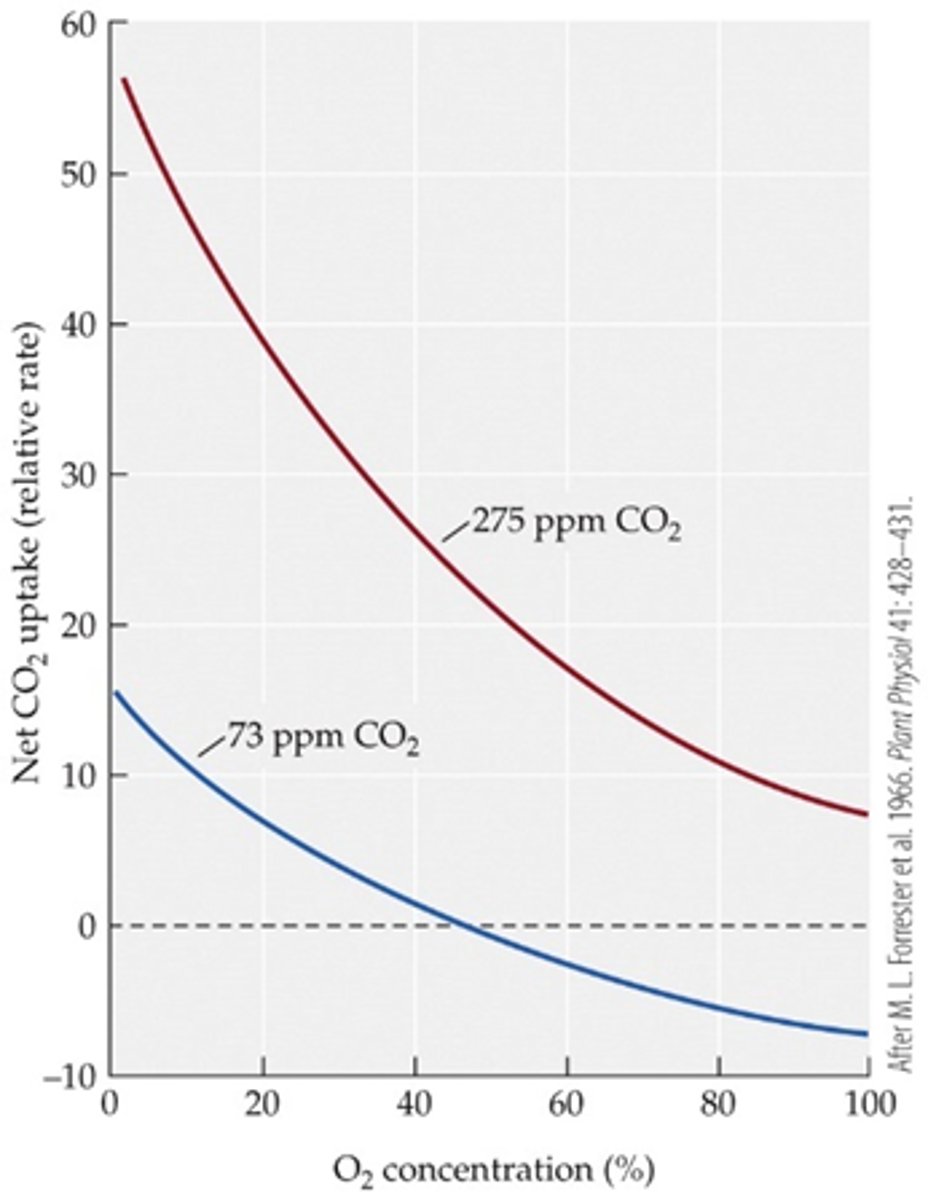
The primary source for carbon used by plants comes from _______
C. atmosphere
Which of the following are not heterotrophs?
F. Green algae and Archea
What takes place during the first step of photosynthesis, referred to as the "light-driven reactions"?
C. Water is split to provide electrons to synthesize ATP and NADPH.
The table below shows the ratio of oxygen to carbon dioxide in the atmosphere of four different environments, and the typical temperature. In which environment would we expect photorespiration to be lowest?
C. Environment 2
